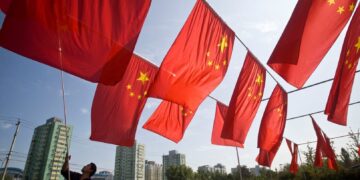USCBC 2017 State Export Report
Executive Summary
Exports to China: Vital to US economic growth
- China’s economic growth rate is slowing, but it remains an important market for US exports. In 2016, US goods exports to China totaled $113 billion, holding steady with the previous year and still the third-largest US goods export market behind Canada and Mexico, our neighbors and NAFTA partners.
- Exports of services to China are becoming significant. In 2015, the most recent complete year of available data, US services exports to China totaled $47 billion, making China the United States’ third-largest services export market. From 2006 to 2015, US services exports to China increased more than 400 percent. Services exports to the rest of the world increased 76 percent.
- Global trade is slowing, but exports of US goods and services to China continue to outpace exports to other major markets. On average, US goods exports to China grew by 8 percent annually over the past 10 years, despite the modest decline over the past two years versus 2014. Of the United States’ top 10 goods export markets, only Japan had positive export growth in 2016, reflecting an overall slowdown in global trade.
- US services exports to China grew more rapidly than all other major trading partners, averaging nearly 19 percent annually over the last decade. Only Brazil came close over the same period, with 17 percent average annual growth. The 6.8 percent growth in services exports to China in 2015 far outpaced growth in exports to the United States’ top three markets: the United Kingdom (3.4 percent), Canada (-9.2 percent), and Japan (-5.2 percent).
- China’s maturing economy is undergoing important changes that have resulted in a slowdown in GDP and trade growth. Even so, US exports of goods and services to China have grown faster than exports to any other major US trading partner over the past decade. From 2006 to 2016, US goods exports to China increased 114 percent. That is greater than the growth to any of the other top 10 US goods export markets, including the two largest US trading partners: Canada (41 percent growth) and Mexico (13 percent growth).
- Exports continue to play an essential role in the US economy and job growth. US goods exports to China come from a wide range of industries including transportation equipment, agriculture, computers and electronics, and chemicals. These exports also sustain logistics jobs in America’s ports and throughout the country. US services exports to China included travel and education, royalties, transportation, business and professional services, and financial services.
China: An important market for states across the country
- Most states have seen significant increases in exports of goods and services to China since 2006.Thirty states experienced at least triple-digit goods export growth to China since 2006, and four states saw growth of more than 500 percent over the same period: Alabama, Montana, North Dakota, and South Carolina. Every US state had triple-digit services export growth to China since 2006, 16 states had export growth of more than 400 percent.
- China is among the top five goods and services export markets for most states. China was a top three goods export market for 39 states in 2016, and among the top five for another eight states. That includes states that are not usually associated with strong China trade ties, including Alabama, Arizona, Minnesota, Michigan, New Jersey, New York, Pennsylvania, Ohio, South Carolina, and Tennessee.
- The value of US goods and services exports to China is significant. Last year, 29 states exported more than $1 billion in goods to China, while another 11 states exported more than $500 million. In 2006, only 17 states exported more than $1 billion of goods to China and only one state exported more than $1 billion in services to China – California.
- While larger states like Texas, California and New York saw significant growth in exports to China, smaller states benefited, too. Kentucky, Kansas, Utah, Wyoming, Rhode Island, Mississippi, Nevada, and New Hampshire all experienced more than 200 percent growth in goods or services exports over the past decade.
More can be done to strengthen US exports to China
- China is a significant market for US exports and it should be even bigger. The United States has a small share of China’s overall market. US goods accounted for about 8.4 percent of China’s total imports in 2015, trailing behind China’s purchases from the European Union, South Korea, Japan, and Taiwan. That market share represents a decline from 2000, when the United States held a 10 percent share of China’s import market.
- Expanding market opportunities in China requires a variety of tools. China maintains an array of tariff and non-tariff barriers that prevent more American goods, agriculture products, and services from reaching Chinese customers. The United States should continue to bring legally sound, industry-supported cases to the World Trade Organization. Congress should expand the resources at the Office of the United States Trade Representative to build upon the successful track record of using the WTO to address unfair Chinese trade practices. The Trump administration should pursue results-oriented engagement with China designed to address barriers of longstanding concern.
- In addition, the United States should push forward negotiations with China on a high-standard bilateral investment treaty, which would reduce ownership and licensing barriers that keep American companies from selling more products and services in China, including exports.
Read Full USCBC 2017 State Export Report here.
Sponsors
Applied Materials
Caterpillar
Chevron
Corning
Dupont
JPMorgan
Smithfield
Thermo Fisher Scientific
Underwriters Labratories Inc.





























